
"NEIL YOUNG, WELCOME SOUTH BROTHER"
Here is a guest essay by Jeff Cochran chronicling the strange, intriguing, quintessential, quixotic, and quirky career of Neil Young.
The first in a series tentatively titled: "Neil Young in This Land of Conditions"? , this essay is -- ostensibly -- about "Southern Man."
Previously, we have published Jeff's writing on 50 Years Ago: “Four Dead In Ohio”, which documented the various intersections of Neil Young and President Richard M. Nixon.
enjoy!
ESSAY: "NEIL YOUNG, WELCOME SOUTH BROTHER"
by Jeff Cochran
Anyone
who has followed Neil Young’s career knows him to be spontaneous,
unpredictable and quick to change direction. To some degree, that has
hampered him artistically as well as commercially. To a larger
degree, it has made his career fascinating.
Last Time Around by Buffalo Springfield Released July 30th, 1968 (see Buffalo Springfield's "Last Time Around" by Harvey Kubernik)
Neil
Young, a native of Winnipeg, first captured interest among rock fans
in 1966 as a lead guitarist, singer and songwriter with Buffalo
Springfield. It wasn’t until the second of Buffalo Springfield’s
three albums, however, that Young gained equal footing with band
mates Stephen Stills and Richie Furay. Then as the band recorded its
third and final album, Last
Time Around,
Young was on his way out the door. A promising solo career awaited.
His first
album, Neil
Young,
had a couple of rockers but the mood overall was more introspective
and romantic than the follow-up, Everybody
Knows This is Nowhere.
While the first album evoked the aura of “Out of My Mind,”
“Broken Arrow,” and “Expecting to Fly,” Young’s softer
selections from the Buffalo Springfield catalog, the second album,
featuring Young’s new band Crazy Horse, called to mind his “Mr.
Soul,” one of Buffalo Springfield’s all-out rockers.
In
the meantime, just after the release of Everybody
Knows This is Nowhere,
Young hooked up once again with Stills, who had formed a new band,
one of the first of the so-called “super groups,” with David
Crosby and Graham Nash. Crosby, Stills and Nash had just released a
wildly successful first album featuring the hits, “Suite Judy Blue
Eyes” and “Marrakech Express.” It was 1969, the year of
Woodstock and men walking on the moon. Young joined Crosby, Stills
and Nash on stage at the Woodstock Festival, leading to great
expectations for the album due for release the next year.
The
album, Déjà
Vu,
is considered top-drawer by many, but some selections are
overwrought or cute. Young did contribute the sweet and mournful
“Helpless” as well as “Country Girl” and “Everybody I
Love You,” co-written with Stills. There were also concert
appearances by CSNY across the country, resulting in the
live two-record set, Four
Way Street.
The title was appropriate. The group could blend beautifully and
determinedly at times, but there were four separate agendas and none
more separate and captivating than Young’s.

"After the Gold Rush" by Neil Young
(see Discovering After the Gold Rush: The Story Behind The Album Cover)
Young’s
agenda was on full display some 8 months before the release
of Four
Way Street.
His third album, After
the Gold Rush,
released on August 31, 1970, was immediately deemed
a classic. The initial enthusiasm for the album has not
only held but increased over the last 52 years. Rock critic
Robert Christgau called the album “a rarity, pleasant and hard at
the same time.”
Members
of Crazy Horse played on After
the Gold Rush as
did other musicians. Nils Lofgren, better known for his guitar work,
played a haunting piano, giving the album a deep and dark dramatic
flair. Lofgren’s contributions were pivotal. Instinctively, he
perceived the aura Young sought, and enabled listeners to
absorb it, as many of the album’s songs carried
listeners on a journey to life’s darker places, destinations
where lost love, dashed hopes, environmental peril, and violence
encroach.
 Filming "Journey Through The Past"
Filming "Journey Through The Past"
Columbus, GA - October 1972
photo by Joel Bernstein
via
Neil Young Archives
One
violent outpost is visited in “Southern Man.” This song, along
with “When You Dance I Can Really Love,” is one of the album’s
two rockers. However, “When You Dance…” rocks in a way that
connects with the desire expressed in the song. The musicians play
with joyful determination similar to that of “Cinnamon Girl,” the
opening track on Everybody
Knows This Is Nowhere.
But “Southern Man” rocks with a sense of foreboding and the
terror found in the Deep South in the ’60s. It is not happy rock
and roll.

"Now your crosses are burning fast
southern man"
The
scenarios in the song recall the malice of fire-hosings in
Birmingham. Young, harking back to the days of slavery, sings of the
tall white mansions and little shacks, imploring the Southern Man to
compensate Blacks for what they’ve endured, before and after
slavery. He scathes the hypocrisy of the Southern Man, who believes
in what the “good book says,” but doesn’t recognize the
humanity in certain creatures of God. In the song’s second verse,
the Southern Man rails at a white woman who has a “black man comin’
round.” And he swears he will “cut him down.” Young had
previously explored the menacing demons that can overwhelm people,
but never so emphatically. The anger possessing Young is akin
to one who witnesses such cruelties daily and has grown
tired of his own silence in the face of continuing injustice. Even
though the prolific Young has recorded dozens of great songs
since, “Southern Man” still deserves paramount attention
for its dramatic tone and steadfast resolve.
The
story of the song goes beyond the song itself, however. There’s the
response to the song. That is, the response of people who heard
the song or heard about it. Many Southerners have long taken
umbrage at outsiders pointing out the sins of their region,
particularly sins regarding race. They believe the
news media keeps the matter of racial discrimination front
and center. Even those whose families would’ve never owned a slave
in the 19th century or those who’d sit contentedly
next to a Black person on the bus in more contemporary times prefer
the subject closed. They know it’s a shameful piece of history
that hits close to home. The white man with the kind heart and a
special empathy for his Black neighbors also recalls his
own family members whose spirits were not so generous. There were
family members who discriminated and even those who profited
by keeping blacks down. The family members were wrong but they are
beloved family members, and since family supposedly trumps
all, it hurts when the subject is raised since they, by
now, believe it properly settled.
Generous to a fault they
may seem, they don’t take into account that their own discomfort
with the issue hardly equates to what victims of the racial
divide suffered. They might also overlook their own
present wealth and comfort, perhaps derived from prejudice against the weak empowered by governmental complicity in
the several generations before. They didn’t hold the whips or
the ropes or have a voice in the laws allowing repression but
many among us have gained materially from the old injustices. If
they’d acknowledge as much, it would be a positive step.
Granted, those
Southerners didn’t want someone from up North, north of the United
States in particular, to chastise their neighbors and loved ones in
such a brutally explicit way, even in song. After all, they had
read of the bad treatment Dr. Martin Luther King received in
Chicago. Therefore, it was reasoned, a Northerner
could hardly be the one to judge. To them it seemed Neil
Young, a long-haired rock and roller from Canada, was
disparaging all white Southerners.
It
likely got under a white Southerner’s skin even more when his
teenagers were listening to “Southern Man,” and while a
bit hesitant to say so, the kids knew Neil Young was right and
they were glad he wrote the song. And they did not know it
just yet, but Young would again take on the issue of race in the
South. Not only that, but there would be rejoinders from emerging
Southern rockers with their own take on the matter. The
teenagers could acknowledge that rock music was tackling serious
subjects. Then too, they would say, Neil Young plays an awesome
guitar on “Southern Man.”
More
To The Picture Than Meets The Eye .
. . During the Civil War, Atlanta, Georgia was considered the
workshop and warehouse of the Confederacy. As Sherman left it in
flames, Atlanta’s fall led to President Lincoln’s reelection and
a Union victory.
A
century later, Atlanta came to be known as the “Cradle of the Civil
Rights Movement.” Martin Luther King, Jr. was born in Atlanta in
1929 and was buried in his hometown 39 years later, a martyr to the
cause of Civil Rights, one who paid the ultimate price for the
dignity of all men and women. Not every Atlantan
bought into the spirit of the civil rights movement, but overall,
the city has served as a shining example of how Blacks and
whites in government and business can work together, a perfect
example being Atlanta’s successful efforts to host the 1996
Olympics.

"CSNY DEJA VU" Film Poster - 2008
Documentary of 2006 Freedom
of Speech tour
So
Atlanta, a blue city in a red state, seemed natural
for a CSNY concert appearance during their 2006 Freedom
of Speech tour.
Atlanta had welcomed the world in ’96 and had generally* been a
successful stop for Neil Young, having played the city numerous
times since the ’70s, appearing at the Omni, the Fox
Theatre, Philips Arena and the amphitheatres.
Touring
behind Young’s album, Living
With War, the
reunited CSNY were again striking blows against the empire. The set
lists throughout the tour included their anti-war songs from the late
’60s and early ’70s such as “Wooden Ships,” “Military
Madness.” and “What Are Their
Names,” augmenting Young’s new songs which denounced
the United States’ invasion of Iraq. Other
well-known sociopolitical songs featured in the concerts were “Teach
Your Children,” “Find The Cost Of Freedom” and “For What It’s
Worth,” each long embraced by those to the left
of America’s political center.
In
the early to mid ’80s, it was a more politically conservative
Neil Young speaking out on the issues of his adopted country, voicing
disapproval over Jimmy Carter and endorsing Ronald Reagan’s arms
policies. Young’s comments, however, made their way into the
music press when a string of lackluster albums brought his career to
a low ebb. Only his hard-core fans, quite use to his
mercurial inclinations, took note of the jingoism then
influencing his political thoughts. In the late ’80s,
when Young revived his career, he also seemed to shift away from
the political right, as indicated by the material on his
album, Freedom. Absorbing
the American mood after Ronald Reagan’s two terms as president,
Young noted a country riding high in the material world but unable to
secure equanimity of spirit. His observations were key in
making Freedom one
of his most resonant and vital albums.
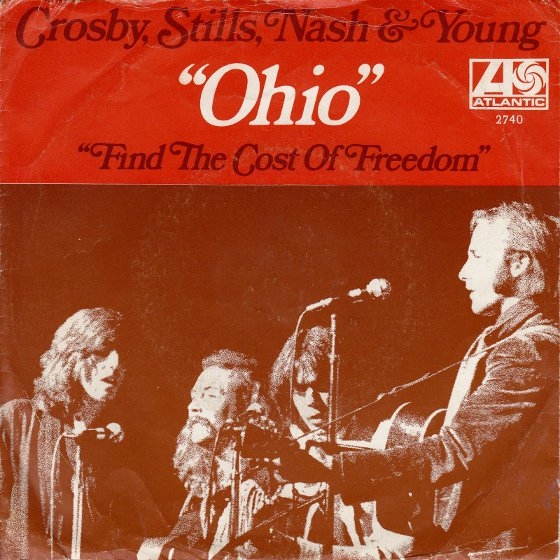 "Ohio" 45 Atlantic Records Single (w/ "Find The Cost of Freedom")
"Ohio" 45 Atlantic Records Single (w/ "Find The Cost of Freedom")
by Crosby, Stills, Nash & Young - May 1970
As
with the Kent State killings which inspired him to write “Ohio,”
the most fiery protest song of the rock era, and the discriminatory
treatment of blacks in the South which led to his writing “Southern
Man” and “Alabama,” it is when Young is most incensed
about war, bigotry and misuse of government power that
he throws himself head-first into writing and promoting his political
songs. The war in Iraq, and especially the way President Bush led his
nation into battle, with unfounded claims of Iraq’s “weapons of
mass destruction,” and the Mission Accomplished appearance when at least 3,900 more American soldiers were yet to die in
the war, were among the things incensing Young in
the new century’s first decade. Those things also
upset millions of Americans, many who set aside a good chunk of
the week’s grocery budget to see Young, with Crosby, Stills and
Nash, musically inveigh against the war that was eating
away at America. Young assertively promoted the Freedom
of Speech tour and Living
With War with
a special online site that went beyond hawking the musical
endeavors. Mainly, he took strong issue over
what appeared a betrayal by the people, who, as David
Crosby put it, are “the men who really run this land.”
Yes, there
was a lot out there regarding the songs featured in the Freedom
of Speech tour
as well as the assumed political leanings of CSNY. So
how was it that hundreds of people who paid their way into
Atlanta’s Philips Arena to see the group on August
10, 2006 had such little idea of what was driving the group,
particularly Young? And why, if they chose to go to a
concert highlighting freedom of speech, were they so hostile
when that freedom was exercised? They may have paid more than
$100.00 a ticket to see the concert, but they held back on the
southern hospitality, seeming to demand a higher cost for
freedom of speech and appearing ridiculous all the while.
In his
film about the Freedom
of Speech tour, CSNY/Déjà
Vu, director
Neil
Young (using the alias Bernard Shakey) does a superlative job in
not only covering the tour, but also examining the anguish
suffered by those who fought in the Iraq War as well as the anger
felt by millions of Americans helping to foot the bill for
a war they opposed. President George W. Bush, who led the
US into a war of choice, is mocked in the film for his
decisions and a bumptious attitude exhibited that’s
inappropriate, given the troubles afflicting the nation.

Crosby Stills Nash & Young - 7/6/2006 - Camden, NJ2006 Freedom of Speech Tour
photo by Buzz Person (via CSNY.net)
The
anger felt toward Bush was palpable across America, but in the
minds of hundreds who attended the Atlanta Freedom
of Speech concert,
the president was due a free pass. Never mind all
the mistakes he made in office, they thought a rock
singer such as Neil Young had some nerve accusing the president
of lying. When CSNY broke into “Let’s Impeach the President”
from Living
With War near
the end of the show, many
at Philips Arena stood to cheer the sentiment. Also standing, but not
in approval, were those who booed the song and Young, giving him, the
band and the cameras the finger. Hundreds walked out, as was their
right, and, before the cameras, utilized their “freedom of
speech,” with some asinine and obscene suggestions directed at
Young. There were others, who kept it clean, but indicated a lack of
understanding about the meaning of free speech, especially when it’s
unpopular.

Ronnie & Neil:
"We hope you remember that
around anyhow.
Now, more than ever."
Southern
Man Don’t Need Him Around .
. . One gentleman, noting the vast amount of Southerners
killed in the Iraq War, said,”You don’t come to the South
singing this kind of stuff and springing it on somebody.” Another
opinion, albeit less thoughtful, came from a man on the
concourse, who determined that, “If you’ve never been shot
at or never had to shoot at anyone, then you have no right to blame
the government, because they’re … they’re smarter
people up there. You may not realize it, but they’re smarter than
you.” The poor guy probably has no idea, but his words make
him sound as one who, in the words of the song, “Living With War,”
would “bow to the laws of the thought police.”
The
more circumspect of the people who walked out of Philips Arena that
night would have done well to consider Young’s message as one
critical of Bush, yet loyal to the nation, and especially those
in uniform. President Bush wasn’t forthcoming in justifying
America’s invasion of Iraq. He wasn’t loyal to the
American people, taking advantage of them while they
yearned for leadership after the 9/11 attacks. It seems a hazy
memory now, but in the wake of 9/11, millions of Americans set aside
partisan politics to support and hope the best for George W. Bush.
The people were afraid of what would happen when the other shoe
dropped, many of them unaware of how the Bush Administration
would gain more power while misleading them.
All
of the charges Neil Young made against George W. Bush in
“Let’s Impeach The President,” which so angered many
Atlanta concert-goers that evening, wouldn’t have gone very far in
Washington’s corridors of power. Sadly, many of those in the
legislative bodies, whose views came to more closely match
Young’s than the Bush Administration’s, had granted approval for
America’s invasion of Iraq. They too, if their consciences remain
intact, will live with war every day.

Street Survivors by Lynyrd Skynyrd
(original album cover)
Ronnie Van Zant wearing a Neil Young "Tonight's the Night" album cover t-shirt
When
You Write Your Songs .
. . Years ago a prominent reviewer, genuinely fond of Neil Young,
wrote that Young’s voice and guitar could often be grating to some
listeners. Well, yes. Sometimes Young’s singing and playing are
rough, but often there’s beauty in his aggressive style. He
certainly can shock some of his more casual listeners. The man who
sang sweetly of looking in both Hollywood and Redwood for a
heart of gold one year later sang grimly but energetically about
“14 junkies too weak to work.” Neil Young covers a lot of ground;
he surprises, shocks and challenges his listeners, sometimes to the
point, like with many in Atlanta in 2006, they walk out in anger. Yet
less than three years later, a line formed around a prestigious
Atlanta venue to see Neil Young in concert. The great ones not only
entertain, they intrigue.
*The
2003 Atlanta appearance at Chastain Amphitheatre in which songs
from the “Greendale” were featured was not well-received.
Atlanta amphitheater attendees are not concept album types.


Ronnie Van Zant with Neil Young "Tonight's The Night" T-shirt
Oakland Coliseum, July 2, 1977 - Photo by Michael Zagaris
Neil Young with Lynyrd Skynyrd/Jack Daniels Whiskey T-Shirt
Verona, Italy 7.9.1982 - Photo by Paolo Brillo on Flickr(see Ronnie and Neil: Laying to Rest the "Feud Myth" Once and For All)
Thanks for sharing with us here @ TW, Jeff! Much appreciated and very interesting food for thought here on one of our very favorite subjects: the duality of the southern thing.Looking forward to more words here on Neil.
Until next time, see previously published writing by Jeff Cochran on 50 Years Ago: “Four Dead In Ohio”, which documented the various intersections of Neil Young and President Richard M. Nixon.
Labels: neil young, southern man






















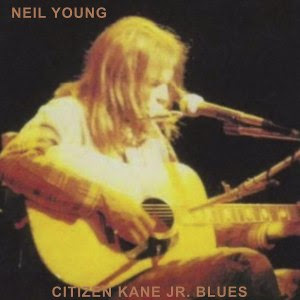









































 Human Highway
Human Highway

















 Concert Review of the Moment
Concert Review of the Moment





 This Land is My Land
This Land is My Land

 FREEDOM In A New Year
FREEDOM In A New Year







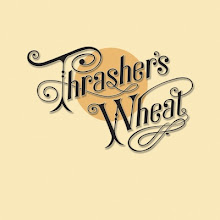
 *Thanks Neil!*
*Thanks Neil!*




![[EFC Blue Ribbon - Free Speech Online]](http://www.thrasherswheat.org/gifs/free-speech.gif)











 The Unbearable Lightness of Being Neil Young
The Unbearable Lightness of Being Neil Young Pardon My Heart
Pardon My Heart



 "We're The Ones
"We're The Ones  Thanks for Supporting Thrasher's Wheat!
Thanks for Supporting Thrasher's Wheat!




 This blog
This blog 
 (... he didn't kill himself either...)
#AaronDidntKillHimself
(... he didn't kill himself either...)
#AaronDidntKillHimself

















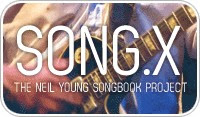





































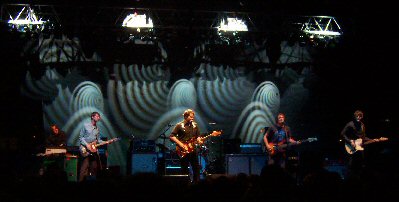

















 Neil Young's Moon Songs
Neil Young's Moon Songs




 Civic Duty Is Not Terrorism
Civic Duty Is Not Terrorism Orwell (and Grandpa) Was Right
Orwell (and Grandpa) Was Right


 What's So Funny About
What's So Funny About 


